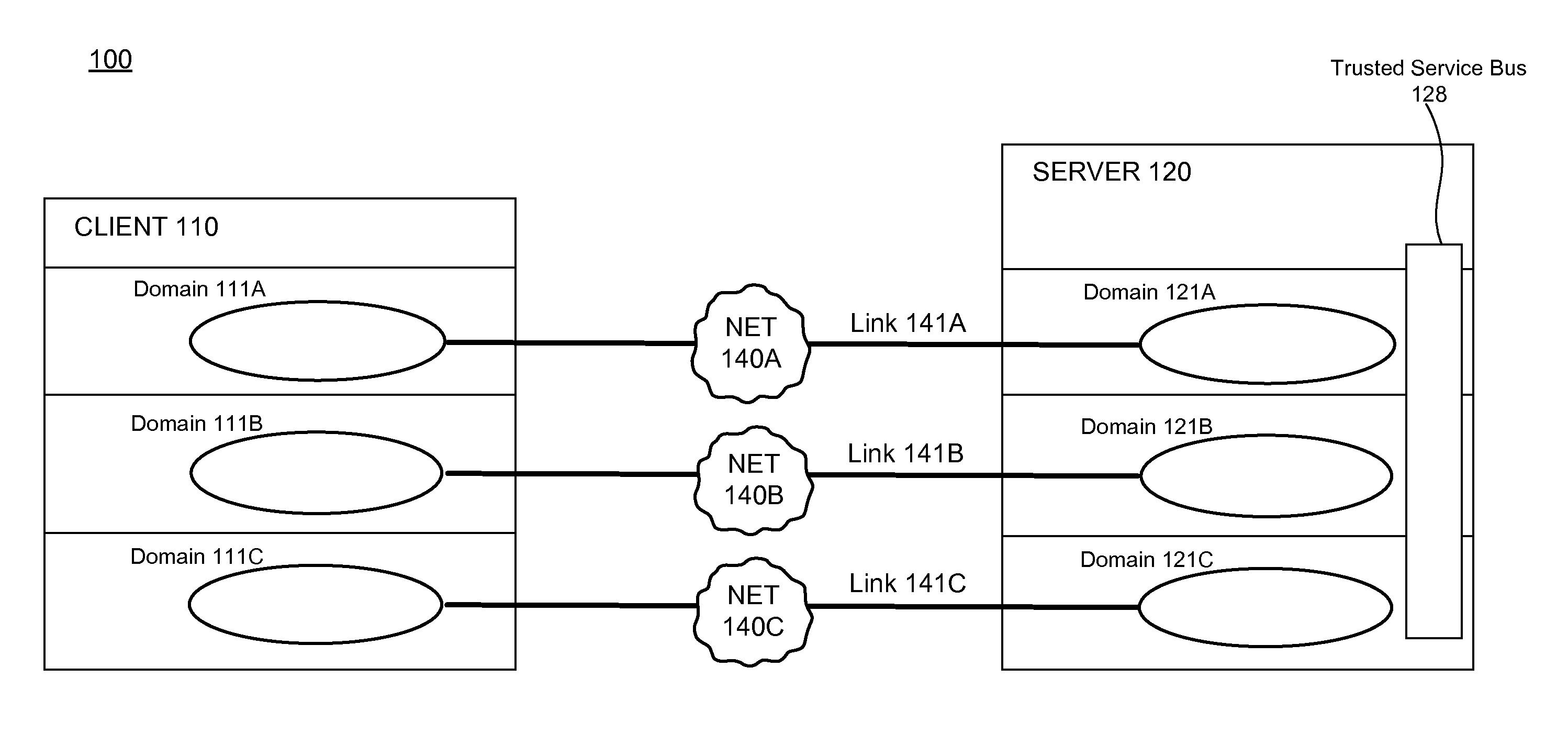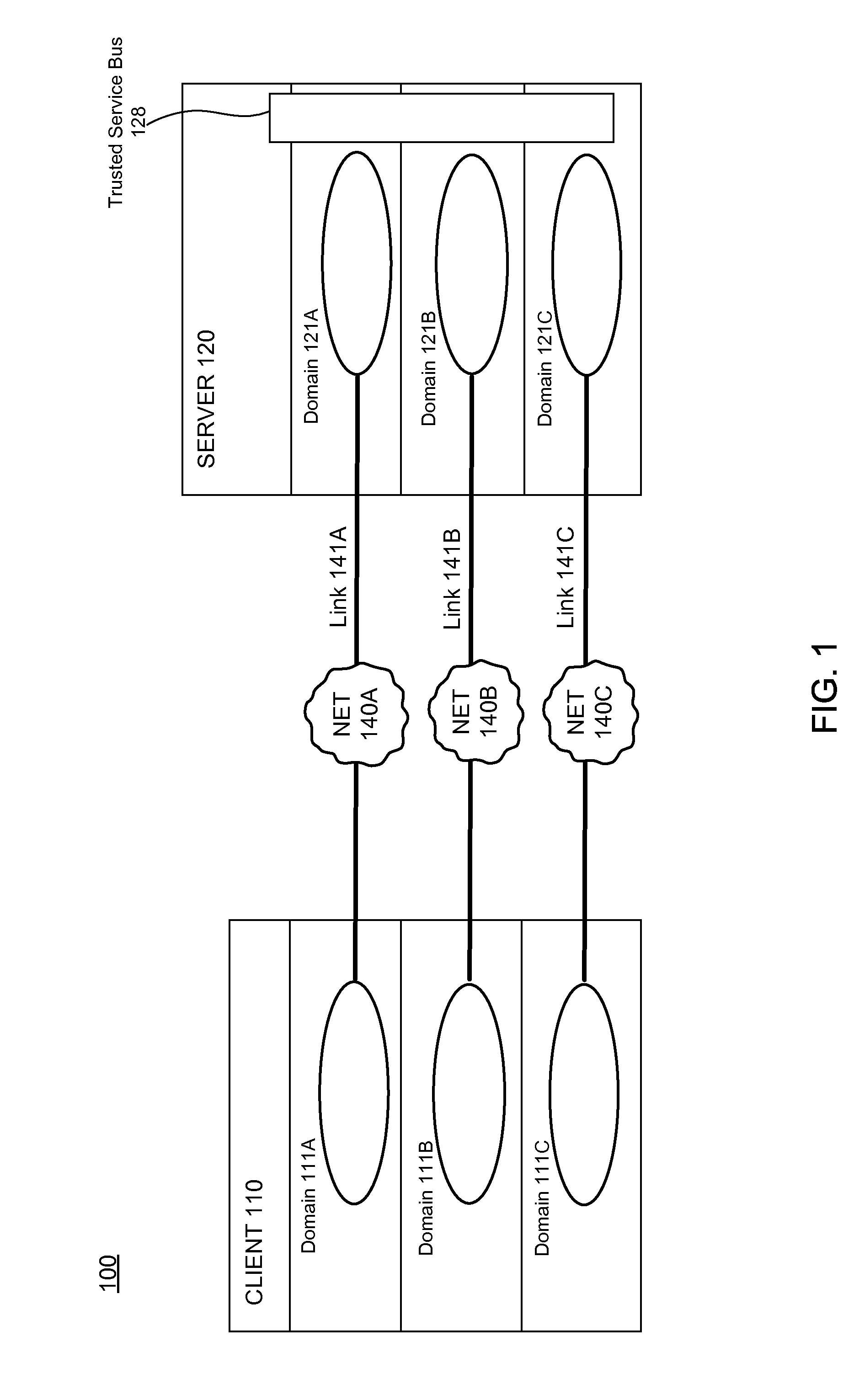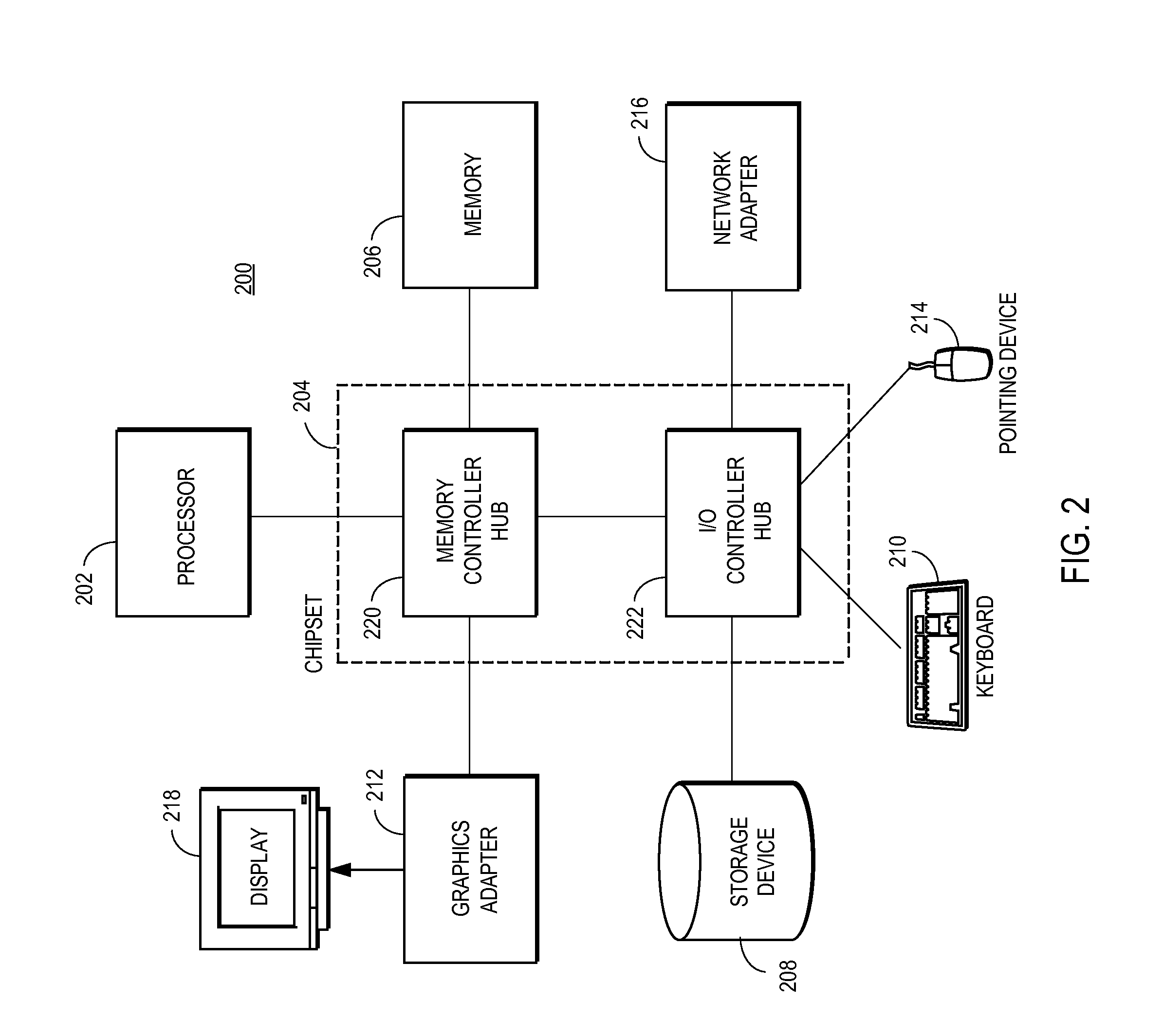Server-based architecture for securely providing multi-domain applications
a server-based architecture and application technology, applied in the field of software application architectures, can solve the problems of compromising difficult to create mls-enabled applications that do not inadvertently compromise the security of the different domains, and presenting a security threat to trusted middleware, so as to achieve greater security risk and more robust security
- Summary
- Abstract
- Description
- Claims
- Application Information
AI Technical Summary
Benefits of technology
Problems solved by technology
Method used
Image
Examples
Embodiment Construction
[0023]FIG. 1 is a high-level block diagram of a multi-domain computing system 100 according to one embodiment. A domain is a computing environment provided by the software of a computing system, such as an operating system or a virtual machine, and sharing in the physical resources of the system. The domain acts as a separate logical computing system and represents a particular security level, such as “Top secret” or “Unclassified.” Each domain has a set of associated users belonging to the domain, who are authorized to use the resources of the domain. Security controls generally prohibit one domain from accessing other domains—that is, resources of one domain, such as files, ports, applications, and the like, are directly accessible only through that domain. The manner in which the security controls are implemented depends in turn on how the domains are implemented, e.g., as an operating system instance within a virtual machine, as a multi-level operating system, and the like, as i...
PUM
 Login to View More
Login to View More Abstract
Description
Claims
Application Information
 Login to View More
Login to View More - R&D
- Intellectual Property
- Life Sciences
- Materials
- Tech Scout
- Unparalleled Data Quality
- Higher Quality Content
- 60% Fewer Hallucinations
Browse by: Latest US Patents, China's latest patents, Technical Efficacy Thesaurus, Application Domain, Technology Topic, Popular Technical Reports.
© 2025 PatSnap. All rights reserved.Legal|Privacy policy|Modern Slavery Act Transparency Statement|Sitemap|About US| Contact US: help@patsnap.com



